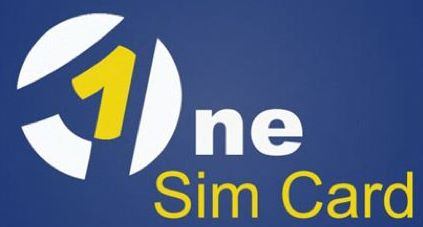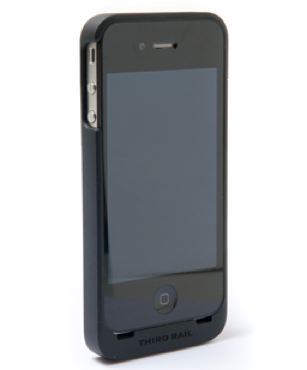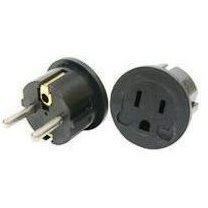Mixing a vacation with field-testing technology can be a risky proposition, but our gadget guy Phil Baker braves the dead-zones to offer his pick for the new phones, GPS and other devices worthy of being included in your carry-on.
I just returned from a vacation to France, where I accompanied my wife who performed in concerts with the other members of the San Diego Master Chorale in five cities in Provence.
Being better at carrying gadgets than carrying a tune, I brought along some new tech products designed for the traveler to test out.
International Phone Options
This was my chance to try out a new unlocked phone while traveling out of the country. I switched my cell service from AT&T to Verizon, and bought an unlocked phone with a SIM card from onesimcard.com for making calls while out of the country.
The calls cost $.29 cents a minute, instead of $1.29 I would spend on a U.S. phone. I got a U.S. number to make it easy and cheap for others to call me from the U.S.
For more on international calls, don’t miss Reducing Your Travel Phone Bills: Saving Money On Global Calling
While the savings were substantial, operating the phone took a little getting used to. Calls are diverted to a third country and you get a call back ring a few seconds after dialing. You then answer the phone and hear the phone ringing the person you’re calling.
 The process worked fine most of the time, but not always.
The process worked fine most of the time, but not always.
Occasionally, the call would terminate before ringing back. Sometimes after dialing, the phone would display cryptic messages such as “invalid call” that the company said to ignore.
The other problem was that when dialing an in-country number in France you needed to translate that number to an international call and figure out when to drop and add zeros. It’s not easy to ask the hotel clerk how to dial a local restaurant as an international call. While not perfect, it did the job and saved me well over $100.
The savings alone more than paid for the phone in just one trip. It also saved money for those calling me, since they dialed a U.S. phone number.

The flagship boutique of Orange, France's largest mobile phone provider, on the Champs-Elysees in Paris. © Giancarlo Gorassini / Abacapress.com for Orange
One alternative is to buy a local SIM card from a French cellular operator and treat the phone as a local would. I would have then needed to let people back home know my French number, and they would have had to pay long distance charges to reach me.
Of course, it would just be better for our U.S. carriers to get the cost of calling overseas well under a dollar a minute. In checking with others abroad, our carriers are about twice as expensive to call outside of the country.
MiFi
I tried out a MiFi card from XCOM Global of San Diego. The company rents country-specific MiFi cards that create a Wi-Fi hotspot for connecting a computer and smartphone to the country’s cellular networks.
 I used the MiFi constantly, typically turning it on for a short time while I downloaded my email and accessed the Web. I mostly using my iPhone in airplane mode with WiFi turned on. It worked flawlessly and connected just about everywhere, including in the rural countryside. I also used it with Google Maps on my iPhone to navigate when walking to restaurants, shops and attractions within the towns.
I used the MiFi constantly, typically turning it on for a short time while I downloaded my email and accessed the Web. I mostly using my iPhone in airplane mode with WiFi turned on. It worked flawlessly and connected just about everywhere, including in the rural countryside. I also used it with Google Maps on my iPhone to navigate when walking to restaurants, shops and attractions within the towns.
I used it sparingly, not because of the cost (it’s $15/day for unlimited data), but to preserve battery life, which was just a couple of hours. For week- or month-long trips, $15 can be a little expensive for only slight use. I’d like to see a lower cost plan for less data.
I also used the MiFi to make Skype calls from my iPhone over Wi-Fi. Skype calls were generally good, but still not perfect and occasionally required redialing to eliminate a poor connection with delays and echoes.
Battery-Life, Adapters and Chargers
 I took along a Slim Case for the iPhone from Third Rail Mobility with a couple of batteries that snap onto the outside. It kept the iPhone powered for 2-3 days at a time without needing to recharge. (Disclosure: I was part of the development team that helped define this product).
I took along a Slim Case for the iPhone from Third Rail Mobility with a couple of batteries that snap onto the outside. It kept the iPhone powered for 2-3 days at a time without needing to recharge. (Disclosure: I was part of the development team that helped define this product).
Speaking of batteries, each evening after returning to the hotel I needed to charge all these devices: my MacBook Air, the MiFi card, a Color Nook eReader, three camera batteries, and phones.
Charging these batteries always seemed to be a challenge because of the limited number of outlets in the hotels and the need for adapters to convert to the correct plug. I brought along a portable outlet strip (Belkin Mini Surge Protector Dual USB Charger) but that was a mistake. It had a grounded plug and didn’t work with most of the plug adapters. The strip just hung directly off of the wall outlet and often fell off.
Apple’s AC adapter also didn’t fit in the recessed outlets or fell off as well, because of its bulk. I ended up charging some of my devices through the Apple’s USB ports. (Unlike some notebooks, Apple computers remain powered and you can charge with the computer in standby.)
 I used two Kensington 33117 International All-in-One Travel Plug Adapters. One failed with a blown fuse during the trip. After my troubles, I would recommend taking individual plug converters designed for the specific country rather than the all-in-one devices.
I used two Kensington 33117 International All-in-One Travel Plug Adapters. One failed with a blown fuse during the trip. After my troubles, I would recommend taking individual plug converters designed for the specific country rather than the all-in-one devices.
It’s less expensive to buy a country’s converters in bulk for several outlets. One example is the VP 11B – Grounded Europe Adapter – USA to Europe Heavy Duty Adaptor Plug German Schuko, available for about $5 from retailers like Amazon.
GPS
If there was one device that was worth its weight in gold it was a GPS. Before I left I downloaded French maps for a TomTom XXL 550TM GPS, an older, but adequate model. It cost $60 and required that I delete the U.S. data first to make room for the new maps. I considered purchasing a new device with European maps, but it would cost about $300-$400.
Maps are also available for Garmin GPS units, but were more expensive. The TomTom worked really well and guided us around a half-dozen cities, to restaurants, hotels and airports. I was impressed with how it handled all of the roundabouts in France. It’s hard to imagine how one could have traveled without it.
By Phil Baker for PeterGreenberg.com. Phil Baker has more than three decades of experience in consumer and computer technology product development and program management. Check out his blog at https://techspertsinc.com.
Related Links on PeterGreenberg.com:












